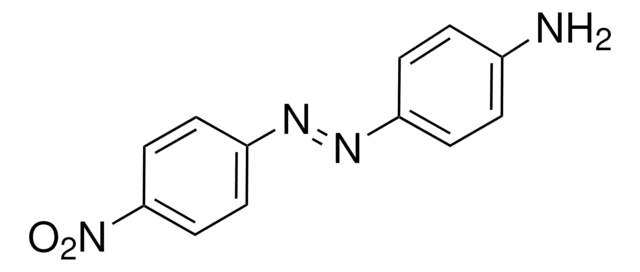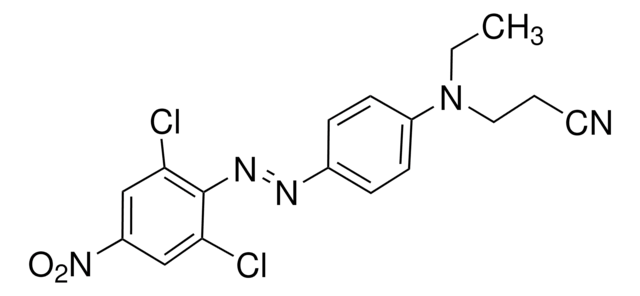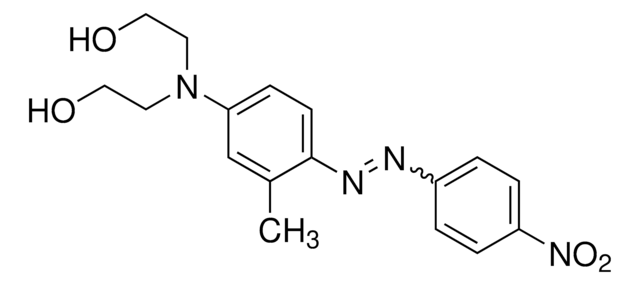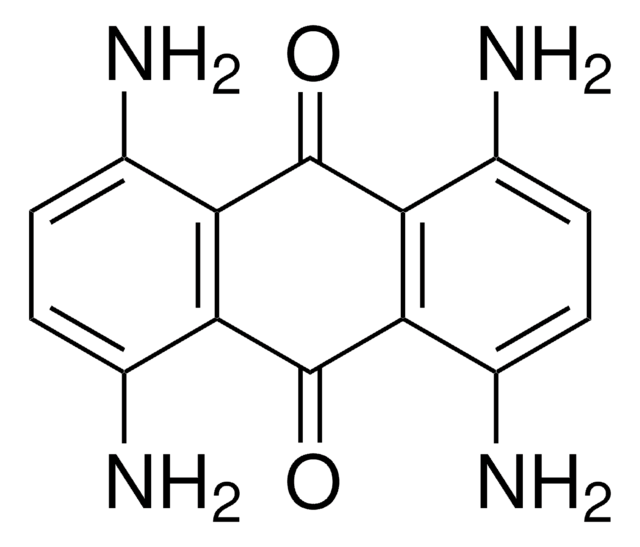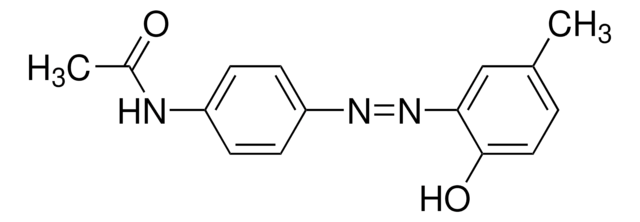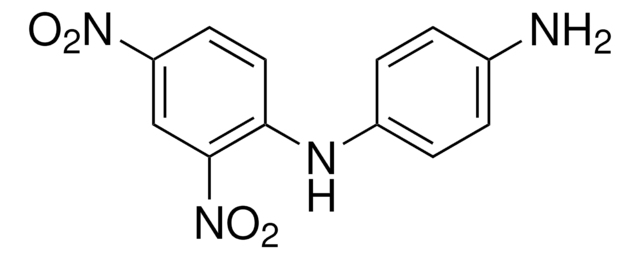29173
Disperse Orange 1
analytical standard
Synonyme(s) :
4-(4-Nitrophénylazo)diphénylamine
About This Item
Produits recommandés
Qualité
analytical standard
Niveau de qualité
Essai
≥96.0% (HPLC)
Durée de conservation
limited shelf life, expiry date on the label
Technique(s)
HPLC: suitable
gas chromatography (GC): suitable
Application(s)
cleaning products
cosmetics
environmental
food and beverages
personal care
Format
neat
Chaîne SMILES
[O-][N+](=O)c1ccc(cc1)\N=N\c2ccc(Nc3ccccc3)cc2
InChI
1S/C18H14N4O2/c23-22(24)18-12-10-17(11-13-18)21-20-16-8-6-15(7-9-16)19-14-4-2-1-3-5-14/h1-13,19H/b21-20+
Clé InChI
YFVXLROHJBSEDW-QZQOTICOSA-N
Vous recherchez des produits similaires ? Visite Guide de comparaison des produits
Description générale
Application
- In textile products by the ultra-high performance supercritical fluid chromatography (UHPSFC) system coupled with triple quadrupole tandem mass spectrometry (MS/MS).
- In environmental aquatic samples using solid-phase extraction and liquid chromatography coupled to electrospray ionization tandem mass spectrometry (SPE-LC-ESI-MS/MS).
Conditionnement
Produits recommandés
Code de la classe de stockage
11 - Combustible Solids
Classe de danger pour l'eau (WGK)
WGK 3
Point d'éclair (°F)
Not applicable
Point d'éclair (°C)
Not applicable
Équipement de protection individuelle
Eyeshields, Gloves, type N95 (US)
Faites votre choix parmi les versions les plus récentes :
Certificats d'analyse (COA)
Vous ne trouvez pas la bonne version ?
Si vous avez besoin d'une version particulière, vous pouvez rechercher un certificat spécifique par le numéro de lot.
Déjà en possession de ce produit ?
Retrouvez la documentation relative aux produits que vous avez récemment achetés dans la Bibliothèque de documents.
Notre équipe de scientifiques dispose d'une expérience dans tous les secteurs de la recherche, notamment en sciences de la vie, science des matériaux, synthèse chimique, chromatographie, analyse et dans de nombreux autres domaines..
Contacter notre Service technique